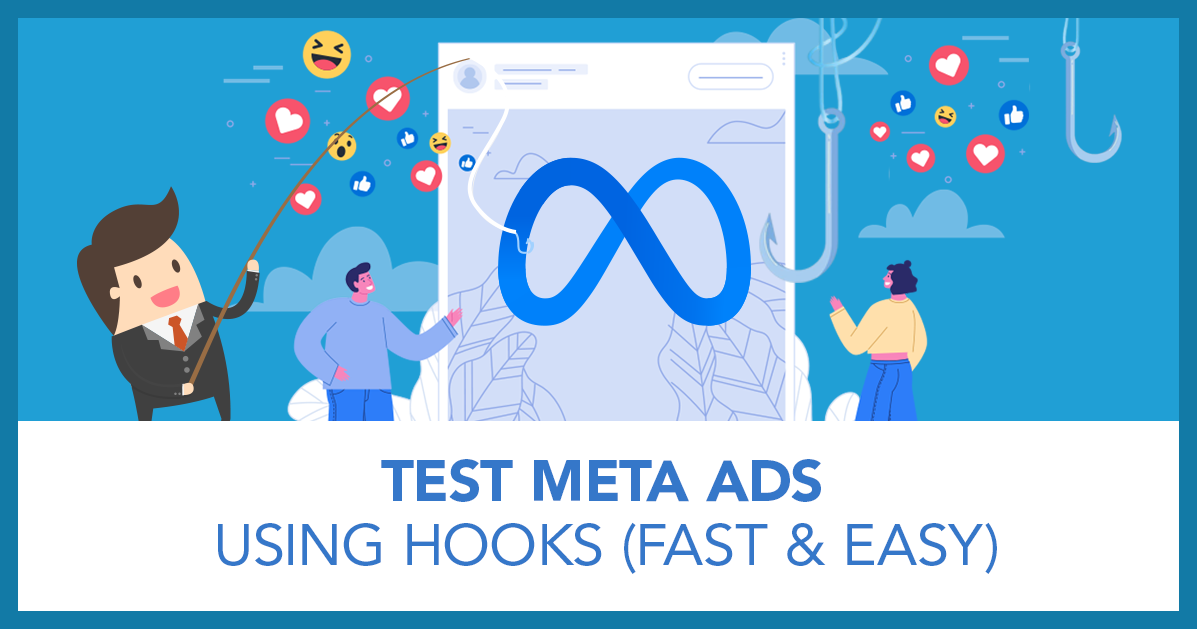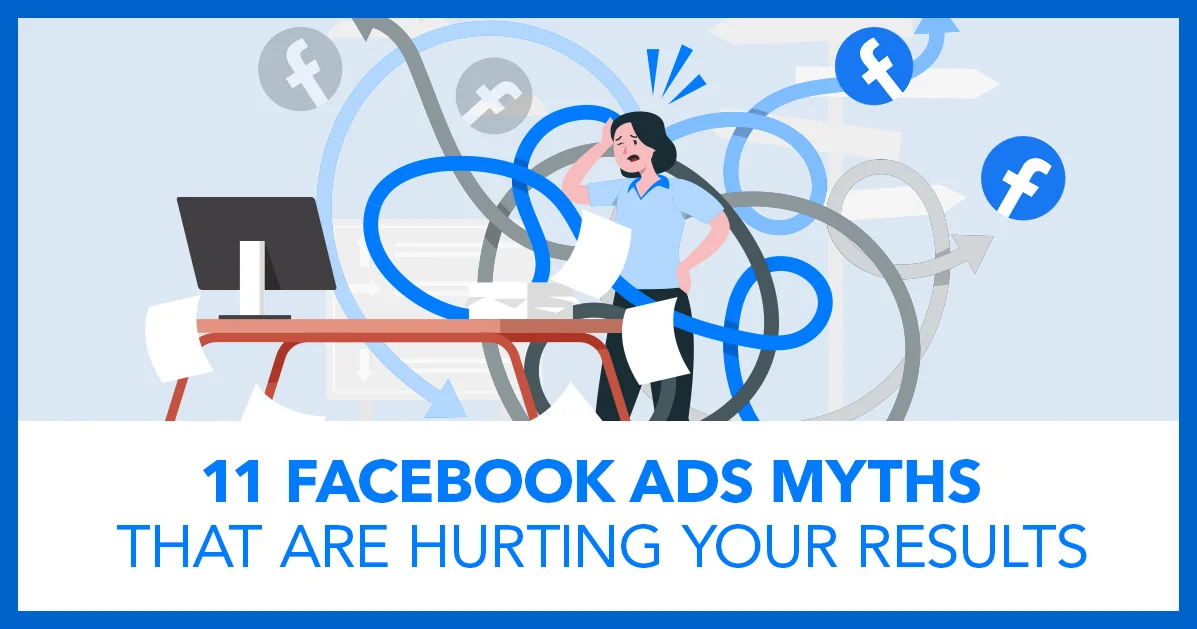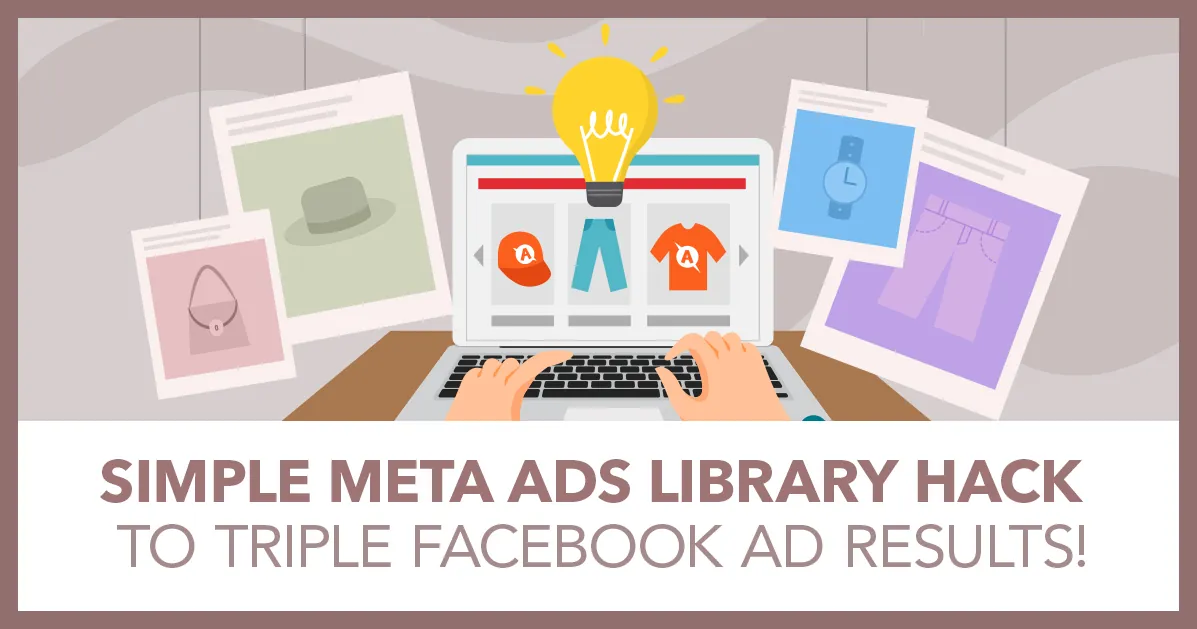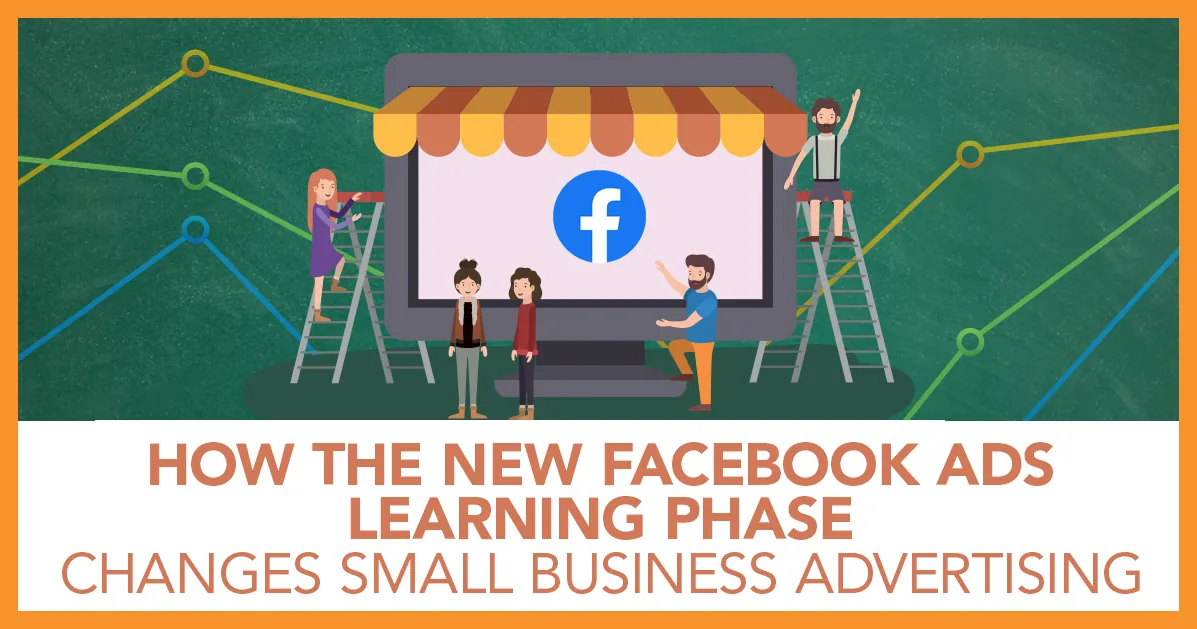
How the New Facebook Ads Learning Phase Changes Small Business Advertising
Introduction
There’s big news for Facebook advertisers: Meta has revamped its Learning Phase, and that means some real changes to how campaigns run and how effective they can be. For anyone managing Facebook ads—whether it’s to promote a small business, drive leads, or boost sales—understanding this new Learning Phase could make a big and likely positive difference in your results.
We’re going to walk through exactly what this new Learning Phase is, why it matters, and how you can use it to get the best out of your Facebook ad campaigns – especially if you are a small business owner. Along the way, I’ll share tips and insights that can help ensure your ad dollars are working hard for you. This is really exciting!

What Exactly is the Facebook Ads Learning Phase?
For those new to Facebook advertising, let’s start with the basics. The Learning Phase is a crucial window right after you launch a new campaign. During this time, Meta’s machine learning uses your campaign data to get the ad to the right people, at the right time, and with the best possible impact. But the learning phase has traditionally taken moderate to large budgets to get through and some higher end service businesses have a hard time making enough conversions to get out of the learning phase at all.

How the Learning Phase Works
Once a campaign is launched, Meta’s AI kicks in and begins testing your ad with different audiences. It will only use the audiences you give it. The learning phase happens when you launch a new campaign. It also happens when you make a significant adjustment to that campaign.
The machine learning phase uses many factors to help deliver the best results, such as:
- Audience Preferences: Which specific segments of your audience respond best to your ad?
- Ad Delivery Frequency: How often should each person see your ad? Sometimes a single impression is enough, but other times, people need to see an ad multiple times to act on it.
- Optimal Times and Days: Meta finds out what days and times get the highest engagement for your ads.
When you give it clear objectives, Meta can more effectively find your desired audience and deliver results. That’s why it’s so important to set up your campaign in such a way that Meta can figure out what you actually want to have happen.

Do you want leads, do you want purchases? Make sure that Meta knows exactly the results you are looking for.
If Meta knows what you want then the machine learning will work to deliver it to you.

The learning phase is a period of experimentation, so traditionally I recommended not making a lot of adjustments to your campaign.
But until recently, the Learning Phase had some limitations that could be challenging for smaller businesses or higher end service businesses that didn’t have the budget or capacity to get to 50 leads or sales a week.
Why This Change Matters
The new Learning Phase requirements are designed to make Facebook ads more accessible, especially for smaller businesses. Here’s a look at the key differences:
Old Learning Phase vs. New Learning Phase
In the past, the Learning Phase required 50 conversions in a week to exit. For larger companies with high ad budgets, this was achievable, but smaller businesses often found themselves in “Learning Limited” mode simply because they didn’t have enough conversions within a small enough time period. This limited their campaign’s ability to fully optimize.
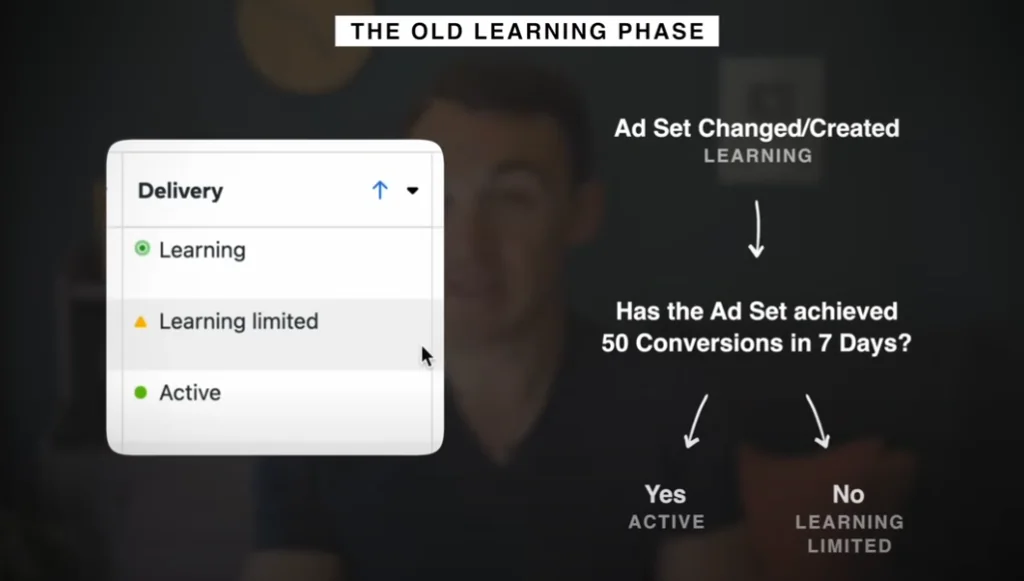
That left many businesses with a dilemma. You could get 20 leads a week and get stuck in learning limited or you could change what you’re optimizing for. For instance you might have optimized for landing page views for the week (which is higher in the funnel) and that might get you out of the learning phase. But there is a big downside, because then you aren’t optimized for leads.
That means you might end up with worse results, because you aren’t optimizing for what you really want.
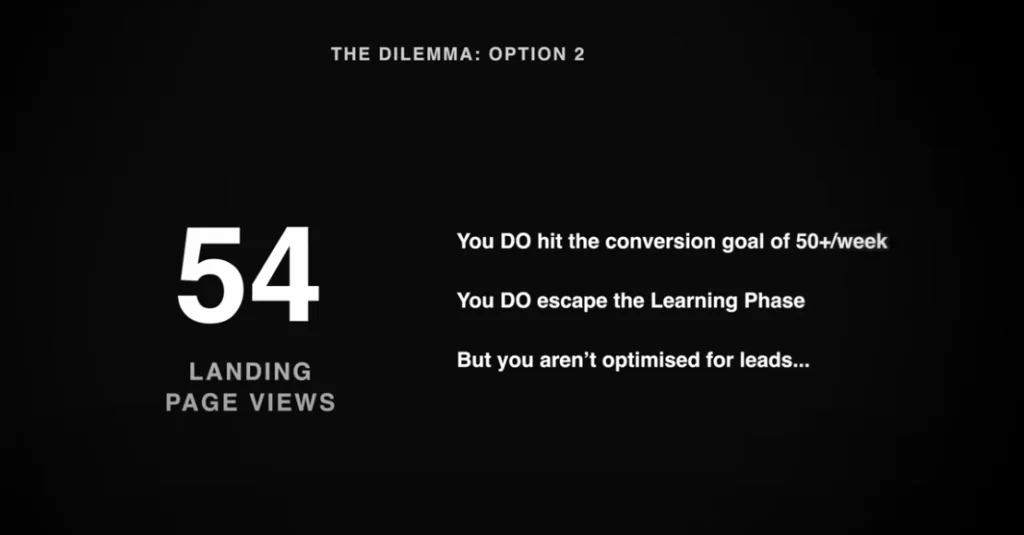
Now, Meta has adjusted that threshold and the new learning phase is really quite different.

- New Requirement: 10 conversions within three days.
- Impact: Small businesses are more likely to meet this target, allowing them to exit the Learning Phase sooner and reach optimized performance faster.
It’s simply much easier to reach 10 sales than it is 50, and even though the timeframe is shorter this is an easier benchmark that requires a lower budget to get through the learning phase.
For those running campaigns on tighter budgets or with lower conversion volume (think service-based businesses or high-ticket products), this new rule opens up better results without needing to ramp up budgets too high.
Adjusting Your Strategy for Success

With the updated Learning Phase, you can make some strategic adjustments to take full advantage of these changes.
- Optimize for the Conversions You Actually Want:
Before, smaller businesses often had to optimize for higher-funnel goals like clicks or page views to meet learning phase conversion targets. Now, you can focus directly on the conversions that matter most—like leads or sales. - Increase Testing Flexibility:
With a three-day Learning Phase, you’re not waiting a full week to make campaign adjustments. Because of the shorter learning phase window many businesses will now be able to make adjustments every three days. This opens up faster feedback loops, helping you optimize and iterate more quickly. Please note though that consistency is still important with Facebook ads and that if you make too many adjustments too quickly it can cause Facebook to never be able to optimize your campaign fully. - Consider Budget Requirements:
Since the new rule requires only 10 conversions, small businesses can see effective results with smaller budgets. Even with limited funds, you’re still able to exit the Learning Phase and enjoy optimized delivery.

Another Awesome Free Facebook Training Resource
There is nothing I like better than to see business owners increase their ROI with Facebook Ads. In order to help business owners succeed with Facebook ads I’ve created a FREE webinar training that you can register for here.
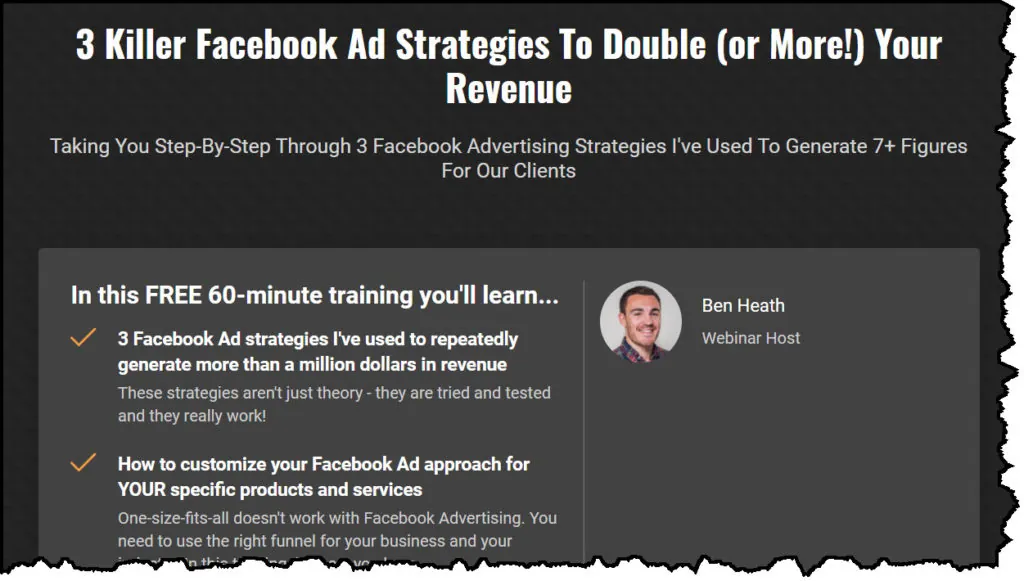
When you attend this webinar you’ll learn:
3 different Facebook ad strategies that we use every day. These strategies have generated millions of dollars in revenue and are tried and proven to work.
How to customize the Facebook ads strategy to your particular business. There is no such thing as a one size fits all approach to Facebook ads.
How Facebook and Instagram have changed and how to adjust your ad strategy to what works in 2024
Practical Tips for Maximizing Facebook’s New Learning Phase
Before you go off and start making lots of changes to your Facebook ad campaigns, it’s important for me to say that stability is still an important factor. That hasn’t changed. You don’t want to mess around with your campaigns all the time because even though the formal learning phase is quicker we also know that Facebook ad campaigns continue to learn after the learning phase.

The more conversions your campaign generates, the better it will usually do. So you want to let a winning campaign run.
That being said, to make the most of this update, a few best practices will go a long way:
Define Clear Conversion Goals
Having a clear objective is always important, but now, with fewer conversions required, Meta’s AI can optimize based on your primary goals. This means that if your ultimate aim is purchases, don’t waste time optimizing for clicks. Give Meta the data it needs to work toward the results that will have the biggest impact on your business.
Keep Campaigns Stable
While the shorter Learning Phase allows for faster adjustments, stability remains important. Making constant tweaks can disrupt the Learning Phase, making it harder for Meta’s AI to get accurate insights.
Tip: Stick to a three-day review cycle if possible. This gives Meta time to collect data, while also allowing you to adjust based on early performance.
Budget and Conversion Volume
If you’re struggling to hit 10 conversions in three days, it may be worth expanding your targeting slightly or increasing your budget just a bit. This can help get your campaigns out of the Learning Phase sooner, allowing them to fully optimize.
Timing is Key
Before making any adjustments, consider your audience’s peak days. Since Meta’s AI works best when it has a steady stream of data, making changes when your audience is most active (say, during peak engagement days) can lead to more effective learning.
What the New Learning Phase Means for Small Businesses
This update levels the playing field for smaller businesses, giving them a better chance to achieve optimized performance without massive budgets. Here’s why the new Learning Phase is especially advantageous:
Easier Budget Management
With a lower conversion requirement, you’re able to see success without needing a large budget. Smaller businesses can now meet the learning phase threshold and get the same optimization benefits as bigger players.
Faster Testing Cycles
Instead of waiting seven days to make changes, you now have the option to test ads every three days. This faster feedback loop can help you find effective strategies sooner and avoid spending too much on underperforming ads.
More Precision with Targeting
Meta’s AI is gathering insights more quickly, allowing you to hone in on your ideal audience faster. For niche products or services, this improved precision can make a substantial difference in campaign performance.
Maximizing Your Success
To ensure you’re making the most of this new phase, here are a few action steps to consider:
Optimize Lower in the Funnel
If your goal is to drive purchases or get leads, you can now optimize directly for those conversions instead of opting for softer metrics like clicks or page views. Focusing on what you truly want will help Meta deliver stronger results.
Focus on Ad Quality
With Meta learning faster, ad quality becomes even more important. High-quality visuals, well-crafted copy, and engaging videos will boost your results significantly.
Tip: Invest time in creating ads that reflect your brand and grab attention. Meta’s AI can do a lot, but strong creative is still essential.
Before You Make Changes
Review your performance carefully before making adjustments. Since the Learning Phase is only three days, it’s easy to want to jump in and make rapid changes. Resist the urge, and give your ads time to gather data.
The Future of Facebook Advertising
Meta’s improvements to the Learning Phase reflect a broader trend toward AI-driven ad automation. As these capabilities improve, they’ll simplify ad management and give advertisers more time to focus on creative aspects and strategy. Here’s what to watch for in the future:
- Smarter Ad Delivery: Meta will continue to optimize ad delivery, meaning advertisers will get even more precise audience targeting over time.
- Improved Budget Efficiency: As Meta’s AI learns faster, advertisers will be able to get better results without needing to scale up their budgets.
The New Learning Phase = Bigger Opportunity for Small Business
The new Learning Phase offers a fantastic opportunity for small businesses to get more from their Facebook ad campaigns. With fewer conversions needed, even small ad budgets can reach optimized performance. By understanding these changes, setting clear goals, and keeping your campaigns stable, you’ll be able to take your ad strategy to the next level.
The key takeaway here is that consistency, stability, and clear goals are essential for success. Use this new flexibility to test, optimize, and maximize your ad campaigns, allowing Meta’s AI to work in your favor.



